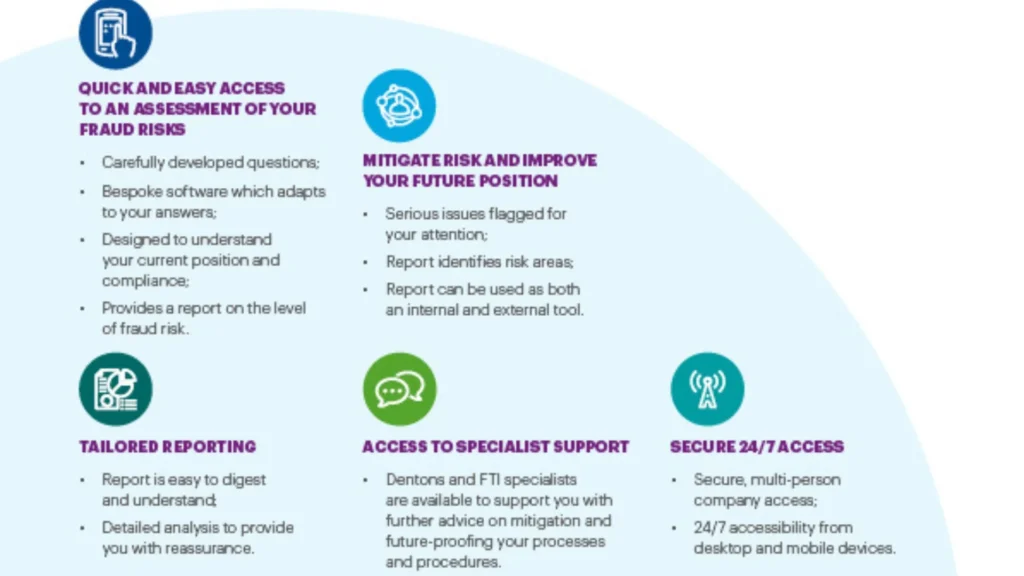Fraud is a persistent challenge that organizations of all sizes must contend with. From financial crimes to data breaches, the potential for fraudulent activities can pose a significant threat to an organization’s assets, reputation, and long-term viability. Understanding the nature of fraud risk and developing effective strategies to mitigate it is crucial for businesses and entities across various industries.
The Evolving Landscape of Fraud Risk
Fraud risk is a dynamic and ever-changing landscape, driven by technological advancements, shifting consumer behaviors, and the ingenuity of perpetrators. As organizations increasingly rely on digital platforms and interconnected systems, the opportunities for fraudsters to exploit vulnerabilities have multiplied. Additionally, the COVID-19 pandemic has accelerated the adoption of remote work and online transactions, creating new avenues for fraud to emerge.
Types of Fraud and Their Impact
Fraud can manifest in various forms, each with its own set of consequences. Some common types of fraud include:
- Financial fraud: Misrepresentation of financial information, asset misappropriation, and unauthorized transactions.
- Cybercrime: Data breaches, phishing scams, and identity theft.
- Procurement fraud: Bid-rigging, false invoicing, and vendor collusion.
- Payroll fraud: Ghost employees, timesheet manipulation, and unauthorized payroll deductions.
- Healthcare fraud: Billing for services not rendered, upcoding, and prescription drug diversion.
The impact of fraud can be far-reaching, affecting an organization’s financial stability, operational efficiency, and public perception. Fraud can result in direct monetary losses, regulatory penalties, legal expenses, and reputational damage, which can ultimately undermine an organization’s long-term success.
The Importance of Fraud Risk Management
Effective fraud risk management is essential for organizations to mitigate the potential consequences of fraudulent activities. A comprehensive fraud risk management strategy should encompass the following key elements:
- Risk assessment: Identifying and evaluating the organization’s vulnerability to different types of fraud, taking into account internal and external factors.
- Internal controls: Developing and implementing robust internal control measures, such as segregation of duties, authorization processes, and regular audits.
- Fraud detection and monitoring: Implementing advanced analytics, anomaly detection, and continuous monitoring systems to identify suspicious activities.
- Incident response and investigation: Establishing clear protocols for responding to suspected fraud, conducting thorough investigations, and taking appropriate corrective actions.
- Employee education and awareness: Fostering a culture of fraud awareness by providing regular training and promoting ethical behavior among employees.
- Collaboration and information sharing: Engaging with industry peers, regulatory authorities, and law enforcement agencies to share best practices and stay informed about emerging fraud trends.
Strategies for Effective Fraud Risk Mitigation
Mitigating fraud risk requires a multifaceted approach that combines various strategies and best practices. Some key strategies include:
- Strengthening internal controls:
- Implement robust segregation of duties, authorization processes, and approval workflows.
- Regularly review and update internal control frameworks to address evolving fraud risks.
- Conduct periodic audits and assessments to identify control gaps and vulnerabilities.
- Leveraging data analytics and technology:
- Utilize advanced analytics and machine learning algorithms to detect anomalies and suspicious patterns.
- Implement real-time monitoring and alerting systems to identify potential fraud.
- Integrate fraud detection capabilities into core business processes and systems.
- Enhancing employee awareness and training:
- Provide comprehensive fraud awareness training to all employees, covering common fraud schemes and reporting procedures.
- Foster a culture of ethical behavior and encourage employees to report any suspected fraudulent activities.
- Implement whistleblower programs and anonymous reporting channels to facilitate the reporting of fraud.
- Strengthening vendor and third-party relationships:
- Conduct thorough due diligence on vendors, suppliers, and other third-party partners.
- Establish robust contract management processes and ongoing monitoring of third-party activities.
- Implement vendor rotation and competitive bidding processes to mitigate the risk of collusion.
- Regulatory compliance and risk management:
- Stay up-to-date with relevant laws, regulations, and industry best practices.
- Integrate fraud risk management into the organization’s overall enterprise risk management framework.
- Regularly review and update policies, procedures, and governance structures to address evolving regulatory requirements.
- Incident response and investigation:
- Develop and regularly test incident response plans to ensure a coordinated, effective, and timely response to suspected fraud.
- Establish clear roles and responsibilities for fraud investigation, evidence collection, and remediation.
- Collaborate with legal counsel, law enforcement, and other relevant stakeholders to ensure appropriate actions are taken.
Conclusion
Fraud risk is a complex and ever-evolving challenge that requires a comprehensive and proactive approach to mitigation. By understanding the nature of fraud, implementing robust internal controls, leveraging data analytics and technology, enhancing employee awareness, and maintaining a strong regulatory compliance framework, organizations can significantly reduce their vulnerability to fraudulent activities.
Effective fraud risk management is not just a matter of protecting an organization’s financial and operational assets, but also preserving its reputation and long-term viability. By prioritizing fraud risk mitigation as a strategic priority, organizations can position themselves to navigate the evolving landscape of fraud with confidence and resilience.
- Technological advancements: The rapid digitalization of business processes and the rise of e-commerce have introduced new vulnerabilities that can be exploited by fraudsters.
- Changing consumer behaviors: The shift towards online transactions and remote interactions has created more opportunities for identity theft, phishing scams, and other digital fraud schemes.
- Sophisticated fraud techniques: Fraudsters are continuously developing new and more complex methods to circumvent internal controls and detection systems.
- Insider threats: Employee fraud, such as payroll manipulation and asset misappropriation, can be particularly damaging due to the perpetrator’s inside knowledge of the organization.
The Financial and Reputational Impact of Fraud
- Direct financial losses: Fraud can result in the misappropriation of assets, unauthorized transactions, and other monetary losses that can significantly impact an organization’s bottom line.
- Regulatory penalties and legal expenses: Fraud incidents can lead to regulatory investigations, fines, and legal proceedings, further compounding the financial burden.
- Reputational damage: The public disclosure of a fraud incident can severely undermine an organization’s credibility, trust, and brand image, making it challenging to regain customer and stakeholder confidence.
- Operational disruptions: Responding to and recovering from a fraud incident can divert resources and attention away from core business activities, leading to operational inefficiencies and productivity losses.
Implementing a Robust Fraud Risk Management Framework
- Risk assessment and monitoring: Continuously evaluating the organization’s fraud risk profile, including the likelihood and potential impact of different fraud schemes, is crucial for informed decision-making and resource allocation.
- Data-driven decision making: Leveraging advanced analytics, artificial intelligence, and machine learning can enable organizations to identify patterns, detect anomalies, and predict emerging fraud risks.
- Collaboration and information sharing: Engaging with industry associations, regulatory bodies, and law enforcement agencies can help organizations stay informed about the latest fraud trends and best practices for mitigation.
- Ongoing review and refinement: Regularly reviewing and updating the fraud risk management framework, internal controls, and response procedures to adapt to the evolving threat landscape is essential for maintaining the effectiveness of the organization’s defenses.
The Role of Employee Awareness and Engagement
- Training and education: Comprehensive fraud awareness training for all employees, covering common fraud schemes, reporting procedures, and ethical decision-making, can empower them to recognize and respond to potential fraud.
- Fostering a culture of integrity: Promoting a strong culture of ethics, transparency, and accountability within the organization can discourage fraudulent behavior and encourage employees to uphold the organization’s values.
- Whistleblower programs: Implementing effective whistleblower programs,
with clear reporting channels and robust non-retaliation policies, can encourage employees to come forward with information about suspected fraud.

Strategies for Vendor and Third-Party Risk Management
- Due diligence and onboarding: Conducting thorough background checks,
financial audits, and reference verifications during the vendor/third-party onboarding process can help identify potential red flags. - Ongoing monitoring and auditing: Regularly monitoring the activities,
financials, and compliance of vendors and third-party partners can help detect any suspicious or fraudulent behavior. - Contract management and termination:
Establishing robust contract terms, including fraud prevention and reporting clauses,
can provide a framework for managing third-party relationships and addressing non-compliance.

